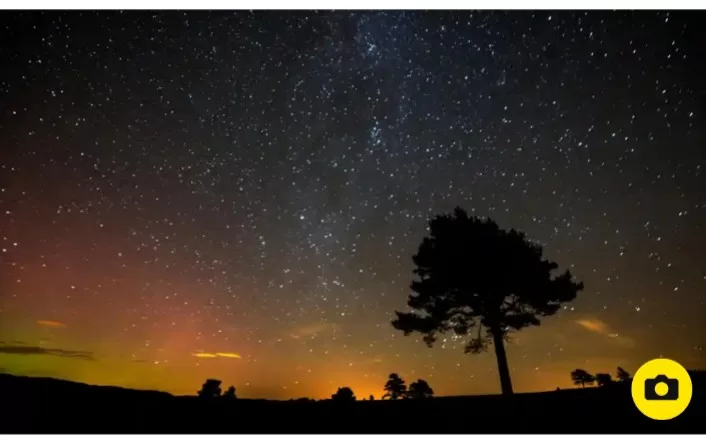In the vast expanse of the night sky, where stars, planets, and celestial wonders have long held sway, a disconcerting addition has emerged. Astronomers are raising alarm bells over the luminous intrusion of a colossal communications satellite, BlueWalker 3, whose form eerily resembles that of a Tetris block.
Scientists report that while BlueWalker 3’s luminosity is not constant, at its zenith, it rivals the brilliance of Procyon and Achernar, two of the most luminous stars in the nocturnal tapestry.
“After unfurling its colossal 64m2 array, BlueWalker 3 graces both pristine and urban skies, albeit in urban environs, its visibility is confined to when it passes directly overhead,” elucidated Dr. Jeremy Tregloan-Reed, a co-author of the study from the Universidad de Atacama in Chile.
Yet, the presence of this satellite transcends mere curiosity.
“Large constellations of vivid artificial satellites in low Earth orbit (LEO) pose formidable challenges to terrestrial astronomy,” the study’s authors contend.
Tregloan-Reed articulates the predicaments posed by such satellites, emphasizing that their radiant gleam leaves indelible streaks when they traverse a telescope’s sensor, rendering the compromised data in those pixels almost irretrievable.
Furthermore, space-based astronomy faces its own conundrums due to these satellites. The Hubble telescope, nestled in LEO, has progressively grappled with the intrusion of Starlink streaks emanating from the satellite internet constellation.
While concerted efforts are underway by the aerospace sector, policymakers, astronomers, and others to ameliorate the impact of these satellites, the inexorable trend of launching ever larger and brighter satellites persists.
BlueWalker 3, crafted by AST SpaceMobile, merely represents a precursor to a forthcoming constellation of satellites aptly nicknamed “BlueBirds.”
There remains another disquieting dimension to this quandary. The research team highlights that the radio frequencies employed by BlueWalker 3 closely align with those used for radio astronomy. This proximity raises the specter of interference, potentially impeding scientists’ quest to fathom the cosmos.
In the journal Nature, researchers chronicle a collaborative effort involving amateur and professional astronomers from diverse corners of the globe. Their collective mission was to observe the night sky and discern the repercussions of BlueWalker 3, the most substantial commercial communications array in LEO.
Notably, BlueWalker 3, though initially compacted during its September launch, unfurled an expansive array in space, becoming a veritable reflector of sunlight.
However, Tregloan-Reed underscores a critical factor: an object’s apparent luminosity is inextricably linked to its distance from Earth. Satellites in LEO, exemplified by BlueWalker 3, manifest considerably greater radiance than their geostationary counterparts.
Even if all satellites were to reduce their reflective luminosity to levels imperceptible to the naked eye, an insidious consequence looms: the cumulative presence of hundreds of thousands of satellites from various nations and operators in low Earth orbit will exacerbate the background glow of the night sky.
This study adds its voice to a growing chorus of concerns about the escalating luminosity besmirching the once-pristine night sky. Researchers this year implored the scientific community to confront this celestial incursion, advocating for a cap on low-altitude satellites to mitigate light pollution and safeguard the sanctity of nocturnal astronomical endeavors.







